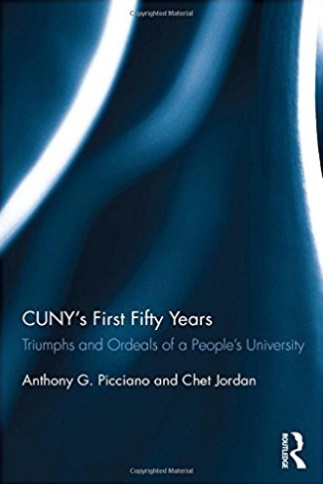Dear Commons Community,
President Trump was invited to give an address at the Boy Scouts of America National Jamboree in Glen Jean, West Virginia on Monday, and what should have been a big plus turned out to be an embarrassment for Trump and the Scouts. In front of an audience of 40,000, Trump went on a rant without focus and full of insults for his political rivals. Elizabeth Williamson, editorial writer for the New York Times gives her take on Trump’s speech in today’s newspaper. Her full editorial appears below. Here is an excerpt:
“Sorry, kids. President Trump was not a boy scout. Comparing his record with the Scout Law — “A Scout Is Trustworthy, Loyal, Helpful, Friendly, Courteous, Kind, Obedient, Cheerful, Thrifty, Brave, Clean and Reverent” — the most we can claim for him is “Clean.” Maybe “Thrifty,” since in 1989, Mr. Trump’s “charitable” foundation issued a $7 check to the Scouts around the same time Donald Trump Jr. submitted his $7 application fee…
After saying, “Who the hell wants to speak about politics when I’m in front of the Boy Scouts?” Mr. Trump did just that, rehashing his electoral victory; encouraging the kids to boo President Barack Obama, a former scout; calling the nation’s capital a “sewer”; and threatening to fire Tom Price, the health and human services secretary on the stage beside him.
Mr. Trump strutted and posed, spurting random lines from stump speeches. He told kids aged 12 to 17 that “the stock market on a daily basis is hitting an all-time high.” He meandered for six minutes about William Levitt, a real estate developer, lewdly suggesting that while Mr. Levitt’s exploits on his yacht weren’t fit for telling around the campfire, there was a lesson in there somewhere about “momentum.”
At times Mr. Trump uttered scraps of a more appropriate message, saying “the values, traditions and skills you learn here will serve you throughout your lives.” But mostly he seemed to imagine himself at a campaign rally. “What do you think the chances are that this incredible, massive crowd, record-setting, is going to be shown on television tonight?”
There is no end to the way that Trump demeans the Office of the Presidency!
Tony
=================================================
Scout’s Honor? Not for the President
by Elizabeth Williamson
July 25, 2017
Sorry, kids. President Trump was not a boy scout. Comparing his record with the Scout Law — “A Scout Is Trustworthy, Loyal, Helpful, Friendly, Courteous, Kind, Obedient, Cheerful, Thrifty, Brave, Clean and Reverent” — the most we can claim for him is “Clean.” Maybe “Thrifty,” since in 1989, Mr. Trump’s “charitable” foundation issued a $7 check to the Scouts around the same time Donald Trump Jr. submitted his $7 application fee.
If only the Boy Scouts of America had considered this before Mr. Trump was invited, as presidents traditionally are, to speak to 40,000 scouts and volunteers attending the Boy Scouts of America National Jamboree in Glen Jean, W.Va. Past presidents have praised the Scouts for instilling principles of good citizenship and public service.
After saying, “Who the hell wants to speak about politics when I’m in front of the Boy Scouts?” Mr. Trump did just that, rehashing his electoral victory; encouraging the kids to boo President Barack Obama, a former scout; calling the nation’s capital a “sewer”; and threatening to fire Tom Price, the health and human services secretary on the stage beside him.
Mr. Trump strutted and posed, spurting random lines from stump speeches. He told kids aged 12 to 17 that “the stock market on a daily basis is hitting an all-time high.” He meandered for six minutes about William Levitt, a real estate developer, lewdly suggesting that while Mr. Levitt’s exploits on his yacht weren’t fit for telling around the campfire, there was a lesson in there somewhere about “momentum.”
At times Mr. Trump uttered scraps of a more appropriate message, saying “the values, traditions and skills you learn here will serve you throughout your lives.” But mostly he seemed to imagine himself at a campaign rally. “What do you think the chances are that this incredible, massive crowd, record-setting, is going to be shown on television tonight?”
Mr. Trump was joined by three cabinet members who are former scouts: Ryan Zinke, the interior secretary; Rick Perry, the energy secretary; and poor Mr. Price. “Hopefully he’s going to get the votes tomorrow to start our path toward killing this horrible thing known as Obamacare,” Mr. Trump said. “He better get them. Oh, he better. Otherwise I’ll say, ‘Tom, you’re fired.’ I’ll get somebody.”
Mr. Trump began to recite the Scout Law (see above). But at the word “loyal” he got lost, saying, “we could use some more loyalty, I will tell you that.”
As he spoke, scouts cheered and chanted. After all, this was a visit from a president. But the jamboree’s social media pages erupted, as parents and partisans reacted.
The organization, too late, distanced itself. “The Boy Scouts of America is wholly non-partisan and does not promote any one political position, candidate or philosophy,” its statement read. “The speaking invitation is based on our ‘Duty to Country’ from the Scout Oath and out of respect for the Office of the President of the United States.”
It’s a shame the president of the United States didn’t see respect as a two-way street.
During his performance on Monday, Mr. Trump pledged to return for future jamborees. The Boy Scouts should promise, scout’s honor, not to invite him. Or, since he never earned an Orienteering badge, hope he gets lost on the way.






